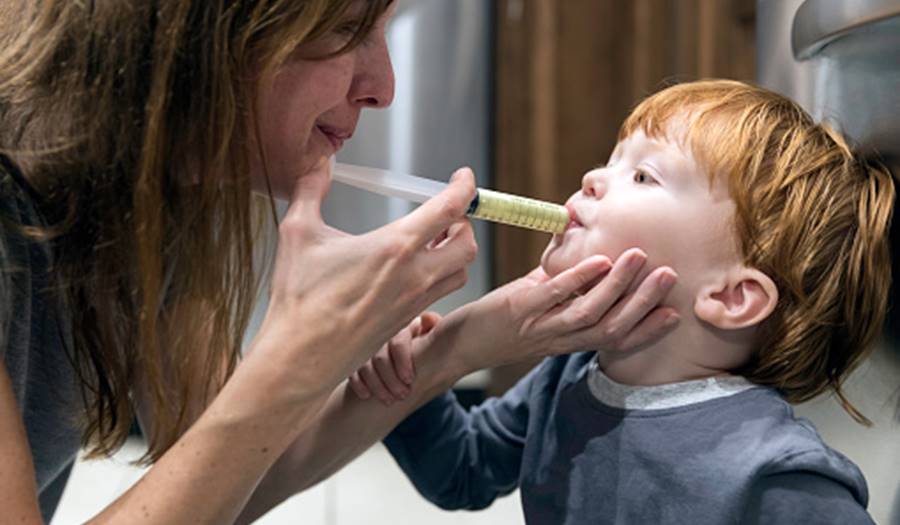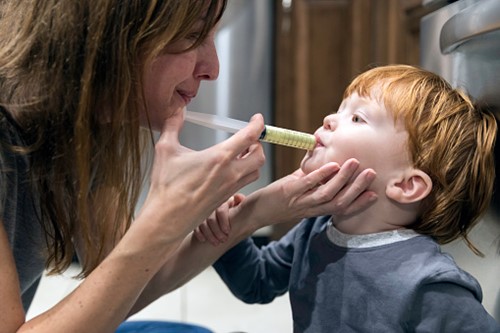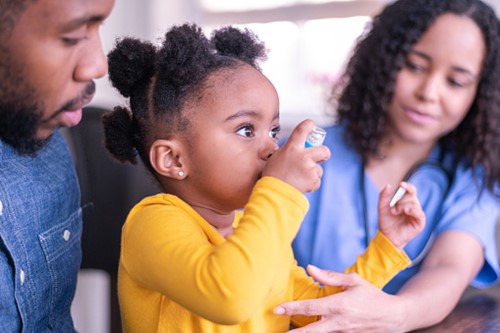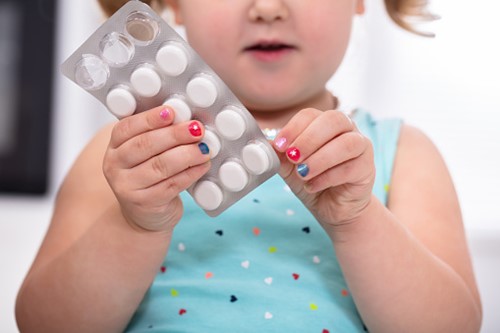
Medication Administration and Safety
5/16/2022

MEDICATIONS
At some point in life every person will take a medication whether that is an antibiotic or a medication to reduce a fever. Medications can help us feel better but can also come with side effects and dangers. Let’s learn more about types of medications, special consideration for giving medications to children, and how to keep your child safe.
Type of Medications
Medications can be administered among a few different routes including Enteral, Parenteral, and topical.
Enteral Medications
Enteral medications are those that a person takes orally and are absorbed via the gastrointestinal tract. The medication may be absorbed under the tongue (sublingual), via the cheeks (buccal), swallowed and absorbed in the small intestines, or inserted into the rectum and absorbed by the rectal mucosa.
Enteral medications enter the GI tract and are absorbed into the bloodstream. If the medication is absorbed in the mouth or cheek, it mostly bypasses the liver. This is an important route for medications that may be broken down quickly by the liver.
Enteral medications are the most convenient and cost effective medications.
Parenteral Medications
Parenteral medications are those that are injected into the body. This can be via an IV or an access port to a central vein. It may also be injected to the muscle, under the skin, or into the skin.
Parenteral medications are given if the medication needs to work quickly, the dosing needs to be precise, or the medication cannot be absorbed in the GI tract. These often, but don’t always, require a medical professional to administer the medication.
Topical Medications
Topical medications are those that are applied to the skin or a mucous membrane. These include those applied on the skin, applied or sprayed into the nose, and medications applied inside the vagina. They also include inhaled medications.
Choosing Medications
How do we choose which type of medication to give? It depends on a number of factors including what we are treating, the medication itself, and the person.
First, we need to know which body part is being treated and the best way for medication to reach that body part. For example, a skin infection in the ear canal can be treated topically, but a kidney infection cannot be treated with topical medication.
We must also know what the body does to the drug. Our body will try to rid itself of any foreign substance. An ingested medication may be broken down by stomach acid, bacteria, enzymes, or immune cells before it can reach the GI tract. Or the body may engulf a substance in immune cells or may try to break down and excrete the substance from the body via the kidneys or liver. We need to make sure the medication administered isn’t immediately broken down, If it is broken down too early it will not be available to the body to be used.
And finally, we need to know what type of medication the patient is able to take. For example, a medication that only comes in a capsule form will not be appropriate for an infant who is unable to swallow a pill.
Children and Medication
Special consideration needs to be given to children when giving medications. Children are not miniature adults. They need pediatric dosing and we need to be aware of the difference between children and adults that change how we prescribe medications. Children are different than adults because they
- Are growing
- Have more surface area
- Have difference in how their organs work
- Have different amounts of enzymes in their body
- Have developing brains
- Have developing bodies
- Have higher metabolic rates (which means they may need higher doses or more frequent doses)
Babies in particular take longer for their stomach to empty and do not make adult levels of acid in their stomach until age 2. They also have more total body water which means water soluble medications will need to be dosed differently.
Giving medications
When giving a child medication make sure
- You have the correct medication
- You give the correct dose/amount of medication
- check to make sure if the weight based recommendation is in pounds or kilograms
- You have the correct tool to give the medication
- Use the dosing syringe or medication cup that was given with the medication by the pharmacy or in the over-the-counter medication packaging
- Do not eyeball the amount or use a kitchen teaspoon
- Double check the tool 0.5ml and 5 ml can look similar
- Give the medication exactly as directed
- If it says twice a day, do not combine dosing and give once a day or split doses into small doses without consulting the prescriber or pharmacist
If your child has a hard time taking medications you can try
- Chilling the medication (check with the pharmacists first to see if this is ok and won’t spoil or inactive the medication)
- Mixing the medication with a small amount of food or juice if it is allowed (check with the pharmacist first)-it should be small enough they can finish it in 1-2 bites or sips
- Hershey’s chocolate syrup is a food that hides medication well: it is a strong flavor and often the same thickness as a liquid medication
- Squirting small amounts into the cheek (there are no taste buds here)
- Having the pharmacy add flavoring
- Changing to a chewable version of the medication
- Changing to a tablet or capsule that you can crush or sprinkle onto applesauce (must be allowed by the pharmacist–not all medications can be crushed or opened)
- Putting the medication in a dollop of peanut butter or insert into squished up ball of bread or wet crackers
- Teaching your child to swallow a pill (age 4 and up)
- Practice when there is no pressure to swallow real medication
- Start small with a non-medicine food item that can be taken again and again while practicing such as a sprinkle, a mini M&M, a chocolate chip, larger M&M or a small mint
- Remind them it requires practice and spend 5-10 minutes practicing every day until they are confident and successful
- Remind them they swallow food that is larger than a pill and do not choke
- Have your child sit upright, tilting their head back a little bit (too far makes it too hard to swallow), then take a few sips of water, place the practice food on their tongue and have them drink water again ( a straw maybe helpful)
There are many over-the-counter medications you can give to children. The most common choices are fever reducers, allergy medications, and cough and cold medications. Remember to check the dosing of these medications on the box or on our website HERE.
Any over-the-counter cough and cold medications (combination or single medications) should never be given to children under the age of 2. Additionally, we do not recommend giving these medications to children under the age of 6 as they often do not provide any relief nor do we want to suppress a cough. Also, we try to avoid giving children combination over-the-counter medications. Cough and cold medications can often include acetaminophen or ibuprofen and incorrect dosing, or giving additional fever reducer, can lead to an overdose. It is better to give one medication at a time.
Medication Safety
Overdoses are the most common cause of medication-related issues in children. Keeping mediations away from your child is an important safety measure every home must undertake. To help keep your child away from medications
- Keep medications where children cannot see them
- Keep medications out of reach including vitamins and creams
- Never refer to medications or vitamins as candy
- Use safety caps
- Consider lock box or safety latches
- Store medications in original packaging
- Never leave medications out with children
- If you are giving or taking a medication make sure to put it away or take it with you if you must respond to someone
- Dispose of expired or left over medications
- Check with your pharmacist as to proper disposal methods
If your child does get into medication or you suspect they got into medication, call Poison control at 800-222-1222. Do not induce vomiting before calling poison control. That is a recommendation that can be dangerous with certain medications.
Children’s Health Care of Newburyport, Massachusetts and Haverhill, Massachusetts is a pediatric healthcare practice providing care for families across the North Shore, Merrimack Valley, southern New Hampshire, and the Seacoast regions. The Children’s Health Care team includes pediatricians and pediatric nurse practitioners who provide comprehensive pediatric health care for children, including newborns, toddlers, school aged children, adolescents, and young adults. Our child-centered and family-focused approach covers preventative and urgent care, immunizations, and specialist referrals. Our services include an on-site pediatric nutritionist, special needs care coordinator, and social workers. We also have walk-in appointments available at all of our locations for acute sick visits. Please visit chcmass.com where you will find information about our pediatric doctors, nurse practitioners, as well as our hours and services.
Disclaimer: this health information is for educational purposes only. You, the reader, assume full responsibility for how you choose to use it.











